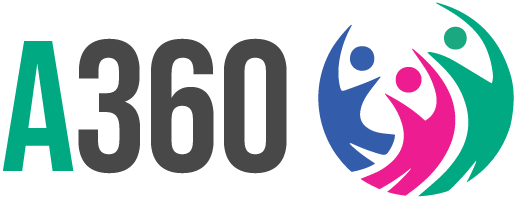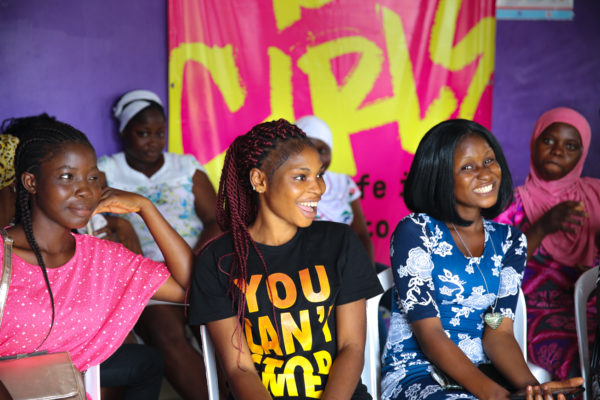That means that the stigma and discrimination that adolescents and youth face across the contexts in which they live does not end with age but is exacerbated by additional social categorizations of marginalization such as gender, class, culture, religion and more. If we aim to be intersectional in our approach at PSI, and overcome – or better yet – demolish power imbalances, particularly in our work with young people, we must recognize and address these overlapping areas of discrimination and the unique disadvantages they bring.
For example, a young girl’s experience may vary greatly from another’s if she is married or not, educated or not, living in a higher or lower economic class, an ethnic minority or not. Each of these experiences brings a unique set of barriers. Our work must respond to that reality.
Through PSI’s youth-powered approach, we strive to acknowledge, observe and analyze the differences that exist that shape, and limit, how young people make health and life choices — and from it, we work to break down the hierarchies that perpetuate these disparities.
How? We outline below.
1. We bring in consumers to the design and decision-making table to step into their world through their voices, and program in response.
When it comes to young people, our Commitment to Ethics in Youth-Powered Design ensures that we not only bring their voice to every room – one often left out due to age – but that we enter those discussions as guests to their experience. We do not direct the conversation with Q&A sessions that pre-determine and limit what we learn, but rather we prioritize respect, and embrace their perspective as the expert of that context and cultures in which we work, and they live. Each story is amplified with authenticity. In doing so, we open the door to the various types of discrimination young people feel in their lives and track these journeys to create more resonant programming.
2. We segment our work with youth to address the varying areas of discrimination where age and gender overlap. For example, our journey mapping activities create archetypes and programs that address discrimination based on marital status –i.e. unmarried girls who are stigmatized against sex and contraception and married girls stigmatized against delaying and spacing. We tailor programming to speak to young people’s self-defined needs, and where they are at in their unique life stages, as captured in the A360 Blueprint for AYSRH Change.
PSI Tanzania Young Designer Rosemary Nazar explains why addressing a girl’s desire for power and control over her often unpredictable life allows us to transform how we position contraception as relevant and valuable. In Tanzania, that’s led to Adolescents 360 (A360)’s Kuwa Mjanja, an adolescent sexual and reproductive health and rights (ASRHR) approach that speaks to married and unmarried adolescent girls’ self-defined need for trusted sources to talk about and build skills that respond to body changes and life plans.
In Ethiopia, Young Designer Bitania Lulu Berhanu shares how her voice represents the desires expressed by young girls, and led to the development of A360 Ethiopia’s Smart Start, an ASRHR solution that reorients contraceptive counseling by leading with financial planning for last-mile rural, married girls aged 15-19 and their partners.
We’ve created programs – like A360’s Matasa Mara Arewa – that overlap structural hierarchies of age, marital status and religion to breaking those down with access to contraception in an early marriage, gaining husband buy-in but also challenging norms by introducing course materials that increase employability and negotiation skills of girls.
3. We delineate according to age band – working with very young adolescents, mid-adolescents and older adolescents – as individuals who experience different stigmas based on their discreet age and how this overlaps with gender, education, economic status, and more.
In Honduras, the Summit Foundation-funded Chicas en Connexion program empowers early adolescent girls with access to AYSRH, education and employability recognizing this compounding need, opening new technical classrooms in basic education centers, while aiming to overcome the structural barriers that surround her through work with communities, policy makers and parents.
4. We understand that real-life environments are diverse – therefore, what works for young people in one place may not always work in another.
Through Implementation Science-based Adaptive Implementation, A360, PSI’s flagship and the Bill and Melinda Gates Foundation and Children’s Investment Fund Foundation co-funded ASRHR program, tracks in real-time girls’ experiences so we can fail-fast to adapt even faster, and keep girls’ needs and concerns at the center.
5. We have a youth-powered approach that reflects our commitment to health equity and to putting power in the hands of the young people we work with and for. But that extends well beyond representation in our programs.
We hire and equitably pay young people as research and data collectors to ensure that we directly challenge economic imbalances in society based on age and gender, while allowing those young people to collect the stories and experiences of other youth, gaining deeper insight into how they live through compounding discrimination. In Cote d’Ivoire, the Dutch Ministry of Foreign Affairs-funded Project Ignite brings girls of lower literacy levels in as partners with young midwives to offer economic growth and validate their influence upon girls in challenging cultural, religious, and economic contexts. This provides value (specifically, income & influence) to a girl who has faced greater discrimination based on her lack of educational attainment. Also in Cote d’Ivoire, we support boys in the informal sector, intersecting age, gender and economic status.
Our Commitment to Ethics promises to prioritize justice – where equitable participation of adolescents and youth across different genders and varying positions of power are included. We equally recognize the rights of particularly marginalized adolescents and youth to engage in HCD and take steps to include them, alongside those who already have agency and privilege.
We released a Global Commitment to Youth Leadership at ICPD25 – pledging to train and deploy 500 young people by 2030 as meaningful youth engagement experts across adolescent and youth sexual and reproductive health (AYSRH) projects.
We are on a pathway to include more representative youth in our work, rather than only working with young leaders who have overcome some structural barriers such as education or economics. We’ve offered meaningful youth engagement tips from PSI young leaders sharing what they want implementers to know about working with youth.
5. Across all PSI youth programs, our integrated programming supports some of the hardest-to-reach and most vulnerable young people – like Beth in Nigeria and Emma in Malawi – to harness their voice and choice to drive forward their life goals.
In Cameroon and Benin, the Dutch Ministry of Foreign Affairs-funded Jeune S3 brings AYSRH services to young people living in fragile and humanitarian contexts. This video documents that work. In Cote d’Ivoire, Ignite is piloting programming to reach young people living with disabilities with sex ed through school curriculums.
**********
To create a world with health equity at the fore, we must recognize the social categorizations- from race, class, age, and gender – that shape interdependent systems of discrimination and disadvantage. We commit to adapting our programming – to account for the variances of power dynamics that broaden and limit young people’s lives. We’ve made some inroads and know, there’s important work still to be done.
Photo credit: Vale a Pena, PSI Mozambique





